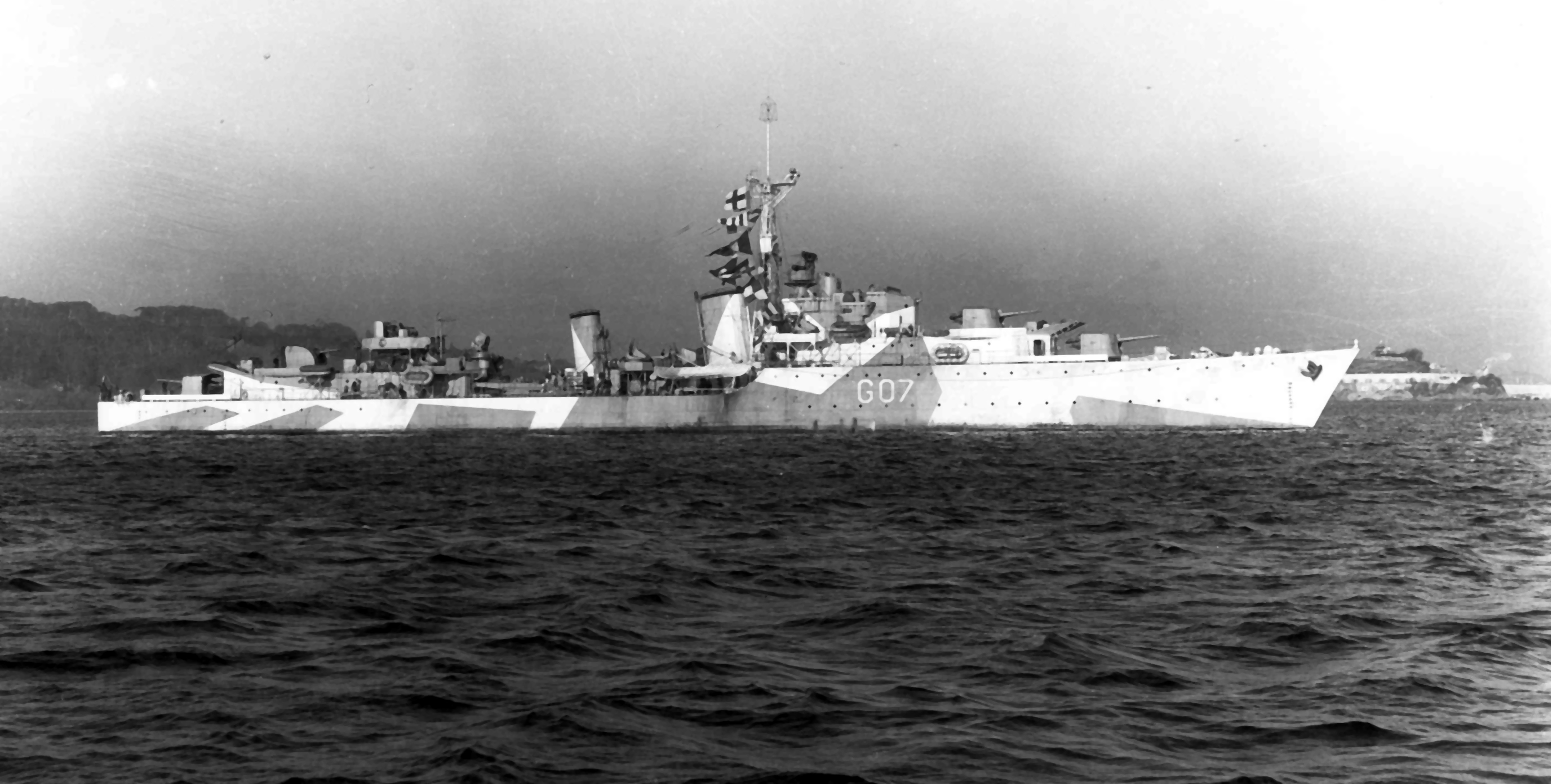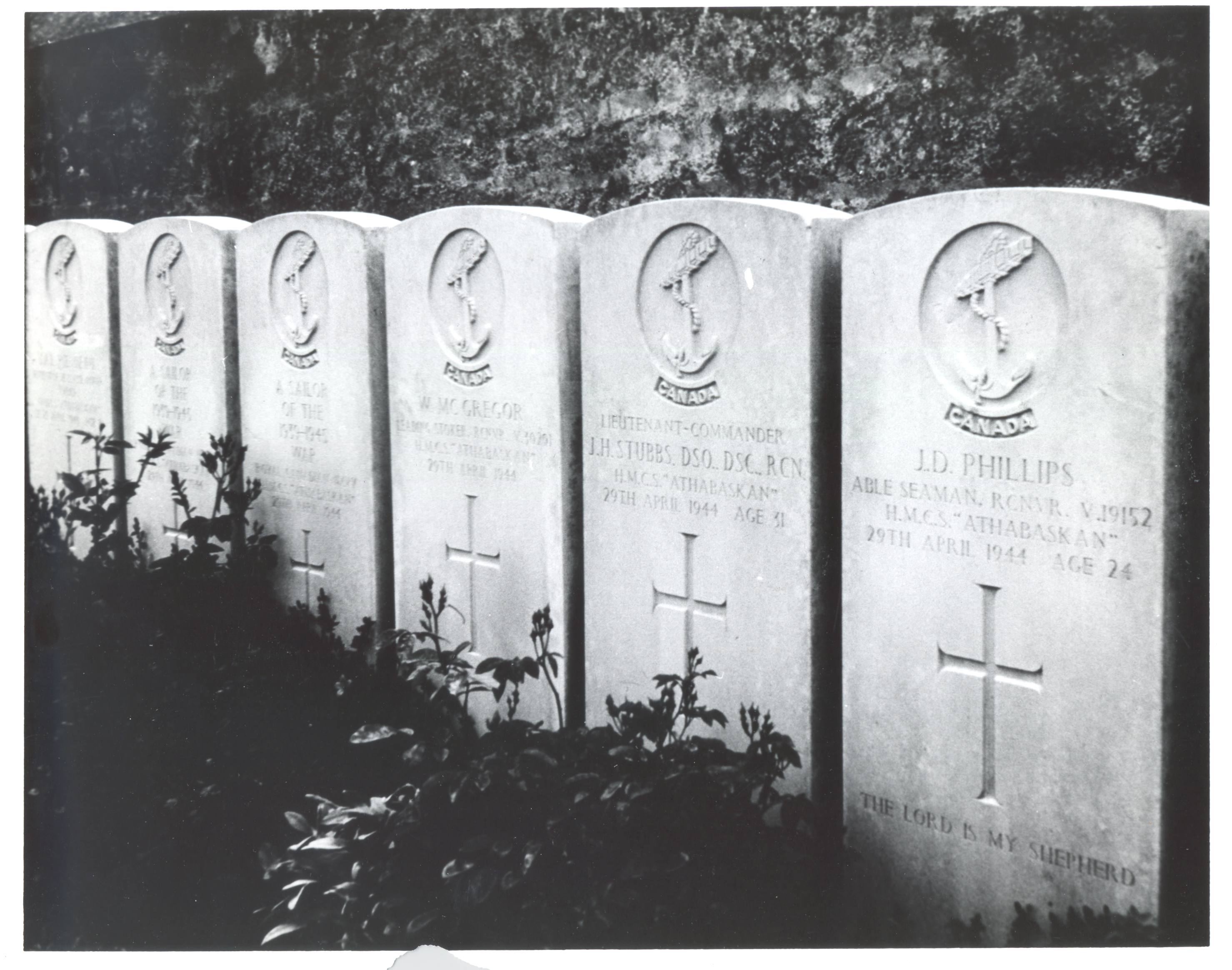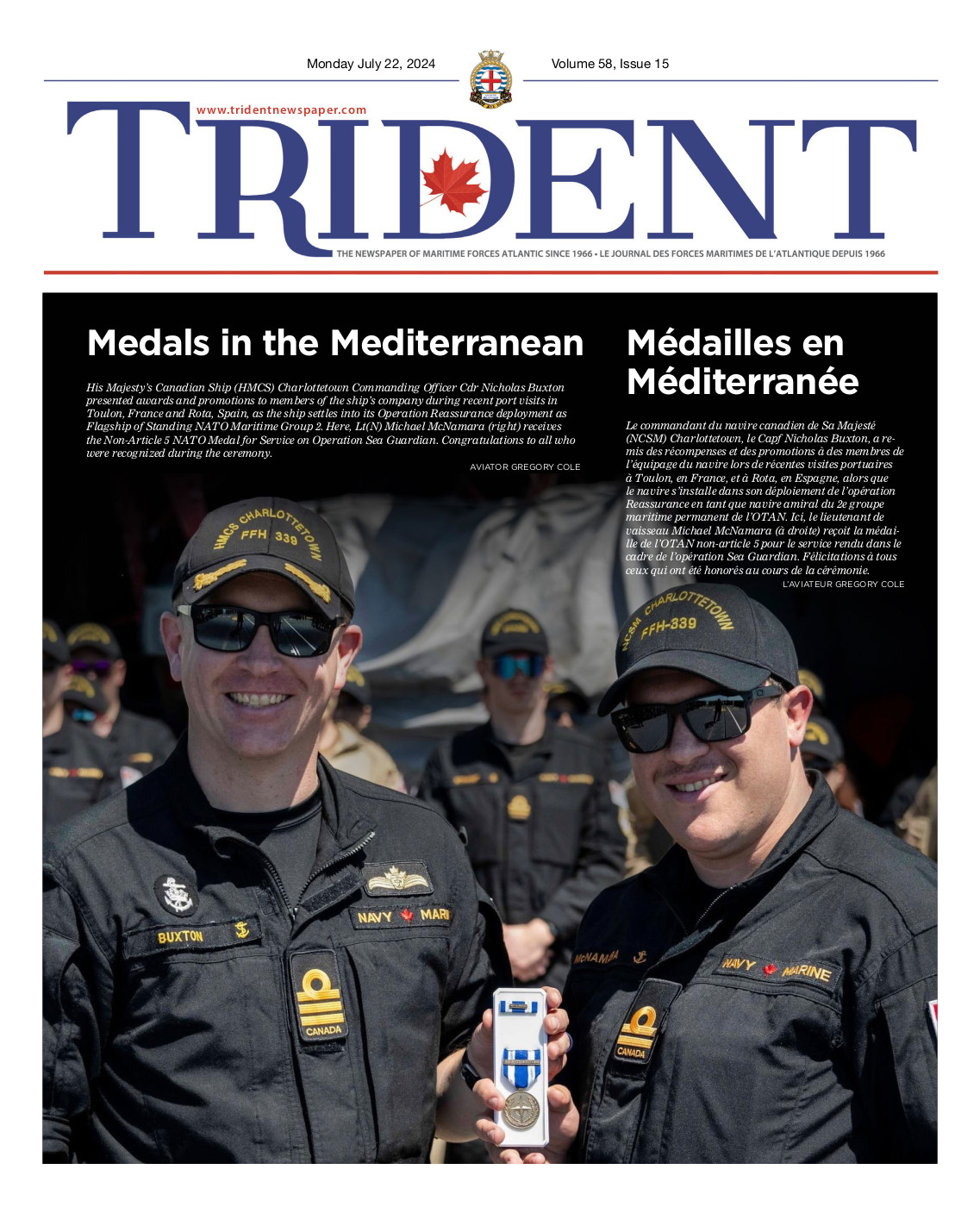
CFB ESQUIMALT NAVAL & MILITARY MUSEUM
Key events of the Battle of the Atlantic: April
By CPO1 (ret’d) Pat Devenish,
Canadian Naval Memorial Trust
April 1, 1938 – As a prelude to war, Halifax Harbour, deemed a military priority, receives RCAF No. 116 Auxiliary Squadron, later formed as a Coast Artillery Cooperation Unit. Its primary role: spotting various seaward targets and directing the many coastal batteries protecting the harbour. Upon declaration of war, No 116 is disbanded due to obsolete and insufficient aircraft. ‘A’ Flight of No. 118 Squadron based out of St. John, New Brunswick remains the sole air defence umbrella until November of 1939 when RCAF No. 1 Fighter Squadron is formed at RCAF Station Dartmouth flying Hawker Hurricanes. In turn, No. 1 Squadron is sent overseas for the Battle of Britain in March of 1940. It would be August of that year before No. 118 Squadron would fly steady cover over the harbour approaches and three more months before they would receive modern aircraft; P-40 Kittyhawks. Eastern Air Command, which stretched east from the Ontario-Manitoba border to include Newfoundland, would set up 30 radar sights and establish 22 air stations, including 13 Bomber Reconnaissance and 8 Fighter Squadrons. Of these, RCAF Station Dartmouth (now Shearwater) would become home to 9 Bomber Reconnaissance and 5 Fighter Squadrons at the height of the war.

NAVAL MUSEUM OF HALIFAX
April 4, 1941 – Order in Council PC 2385; The Merchant Seaman Order, is introduced in Federal cabinet in Ottawa empowering Canadian authorities to remove, by force if deemed necessary, any troublesome crew members from foreign or Canadian vessels, regardless of registry while they are in Canadian ports. This new ruling would stand the test of time in November 1943 when the belligerence of the crew of the burning munitions freighter S.S. Volunteer nearly caused a repeat of the 1917 Halifax explosion.
April 7, 1941 – Off the coast of Sierra Leone, West Africa, the Canadian merchantman Portadoc is torpedoed and sunk by U-124. The crew of the submarine tends to the wounded, repairs the lifeboat and gives Portodoc’s crew a heading to Freetown. Though the crew survives and makes it to land, they come ashore in French Guinnea, loyal to the Vichy French government, subsequently becoming Prisoners of War. Months later, a prisoner exchange is arranged and the survivors are permitted to “march” to the Sierra Leone border to be repatriated to Canada by years end. By then, however, seven more of Portadoc’s crew have succumbed to the elements.
April 1, 1942 – The Canadian merchantman Robert W. Pomeroy strikes a mine off Cromer, England in the North Sea and sinks with the loss of one of her crew of 23.
April 8, 1942 – The Park Steamship Company is established out of Montreal to coordinate Canada’s merchant fleet of ships built by Canadian shipyards and administer the movement of material by sea. Work is then contracted out to shipping agents and companies. By war’s end, 182 ‘Park’ class merchant ships would be built in Canadian shipyards.
April 20, 1942 – In the Caribbean off the Turks and Caicos Islands, the Canadian merchantman Vineland is torpedoed and then subjected to surface gunfire from U-154, finally sinking with the loss of one of her crew of 37.
April 27, 1942 – In the House of Commons in Ottawa, a plebiscite is held to determine the necessity for conscription. After much discussion and political in-fighting, it is decided that conscription will be implemented ‘if necessary’.
April 14, 1944 – The River class frigate HMCS Swansea in consort with HMS Pelican coordinate their efforts to sink U-448 in the North Atlantic northeast of the Azores.
April 22, 1944 – HMC Ships Matane and Swansea attack U-311 in the mid-Atlantic, however there is no evidence of a confirmed kill. It is not until well after the war when, German submarine records are examined, that Matane and Swansea are credited with the sinking. This is the third U-boat sinking for the crew of HMCS Swansea in the past six weeks; U-845 on March 10th, U-448 on April 14th and U-311 just eight days later.
April 25, 1944 – HMC Ships Haida, Athabaskan and Huron along with the British destroyer HMS Ashanti and cruiser HMS Black Prince are formed into Force 26, part of the 10th Destroyer Flotilla. Almost immediately, they are dispatched to intercept three German destroyers suspected to be sailing from St. Malo off France’s northern coast. In a spectacular nighttime action, several hits on an unknown number of German ships are observed and the German destroyer T-29 is sunk and destroyers T-24 and T-27 limp back to Brest both having suffered hits. It is during the jockeying to fire on the mortally wounded T-29 that Ashanti rams Huron leaving Haida and Athabaskan alone to bear the brunt of responsibility in the coming days.
April 29, 1944 – HMC Ships Haida and Athabaskan in action north of Brest, France come under heavy enemy fire from the two German destroyers remaining from the previous day’s action. In the melee, Athabaskan is hit but does not lose power and continues to fight. An explosion aft lights up the sky and Athabaskan is doomed. She sinks with the loss of 128 men including her Captain, LCdr J.H. Stubbs. Haida continues the fight and one of the German destroyers, T-27 is run up on a beach damaged from gunfire and the second, T-24, escapes also suffering damage. Haida returns to the point of Athabaskan‘s demise and picks up survivors before heading west to the safety of the British coastal waters 100 miles away. Along with the deaths of 128 of her crew, 86 more Athabaskan crew members are taken prisoner.
April 16, 1945 – Conducting minesweeping and anti-submarine patrols off Halifax harbour, HMCS Esquimalt is torpedoed and sunk off Sambro Island by U-190 with the loss of 44 of her crew. Striking her stern on, the torpedo obliterates the entire after end of the ship and it sinks beneath the waves in less than four minutes. Though several aircraft overfly the area and two other minesweepers pass within two miles, it is only after being in the water for more than six hours that survivors are rescued by HMCS Sarnia. Esquimalt has the dubious honour of being the last RCN vessel lost to enemy action in the Second World War. Ironically, on May 12th, U-190 would be escorted into Bays Bull, Newfoundland by HMC Ships Victoriaville and Thorlock and on June 4th, into St. John’s as a war prize.





